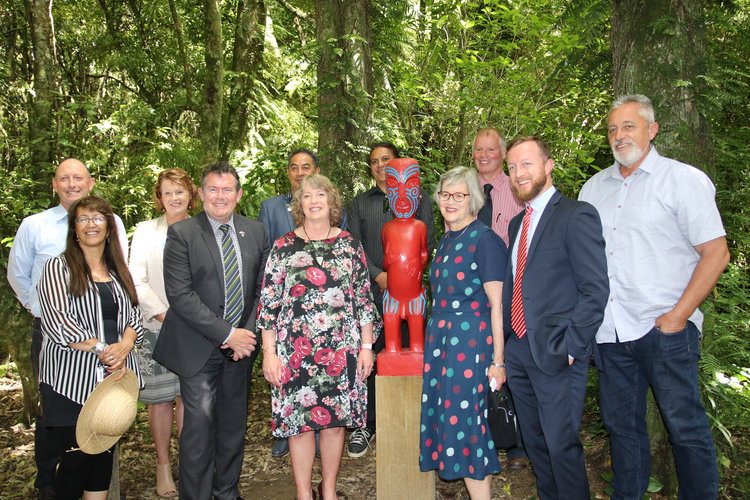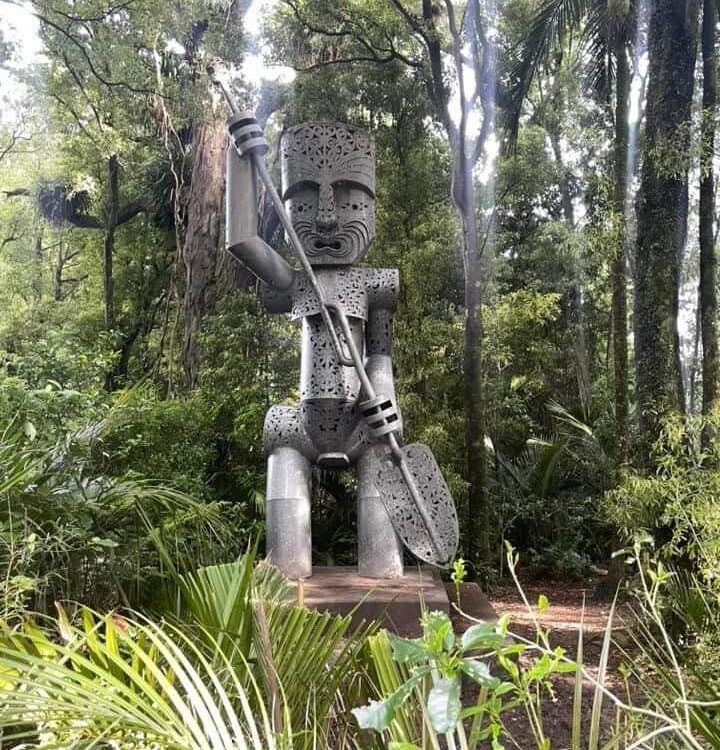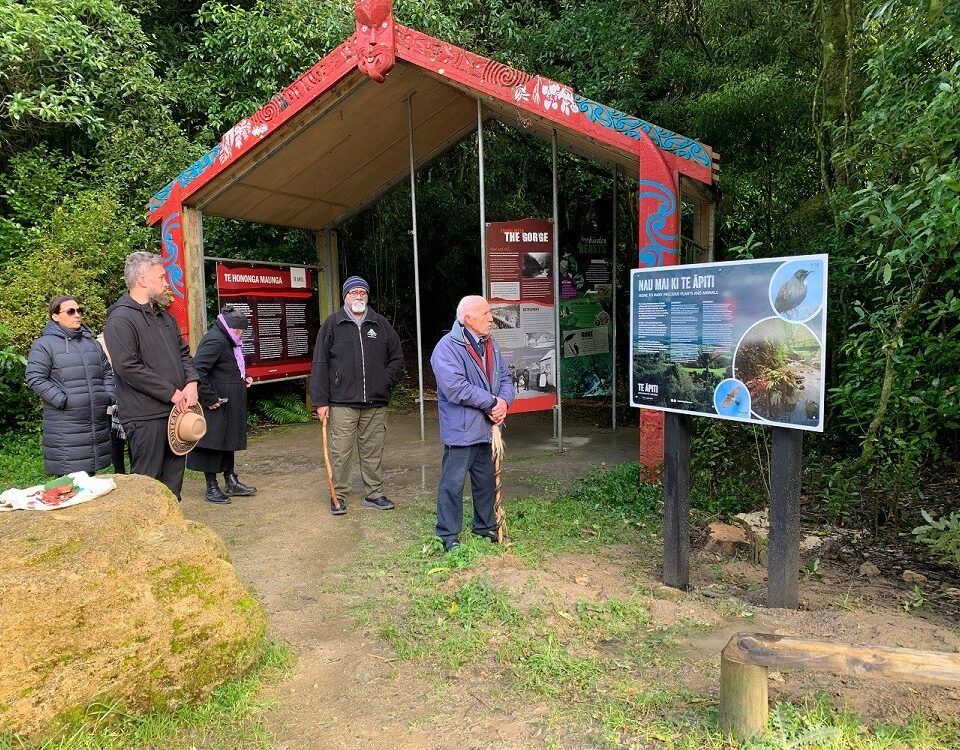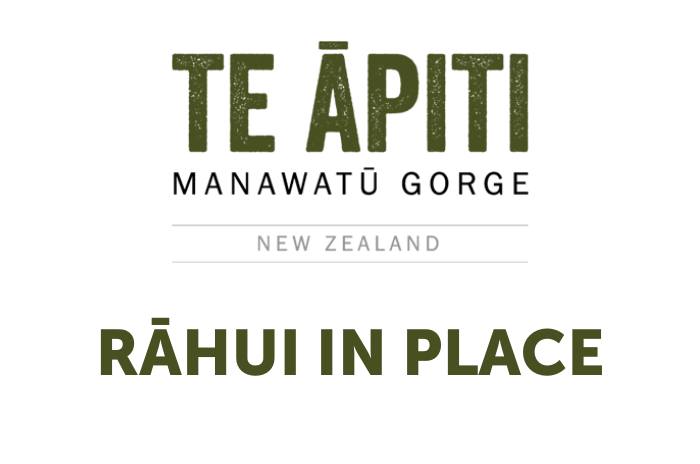“Having carvings at both entrances to the popular Gorge walks has always been part of our vision for enhancing the cultural value of the site. The carvings have been a number of years in the making and we are fortunate to have had access to the services of Rangitāne carver Craig Kawana.”
Rangitāne o Tamaki nui-ā-Rua kaumātua Manahi Paewai says the name Te Hononga Maunga refers to the unique position of the Gorge between two mountain ranges and was a revered place to Rangitāne.
“Rangitāne people, who reside both east and west of Te Apiti would recite karakia (prayers) when travelling through to invoke safe passage,” says Mr Paewai.
“These carvings, amongst other things, represent karakia for those who visit. They are also sister carvings to the ones at the Ashhurst entrance so regardless of whether you do a return trip from one side, or walk from one end to the other, visitors are blessed at the beginning and end of their journey.”
Signage at the site provides an explanation of the carvings’ history. Further signage highlighting particular aspects of the carvings, including guardians, ancestors and unique patterns to Rangitāne, will be added in early 2019.
Following the ribbon cutting event Minister Sage will head to Te Waha o te Kurī, Ferry Reserve to hear from members of the Manawatū River Leaders’ Accord about work underway to protect and enhance the Manawatū River and catchment, of which the Gorge is a special feature.




